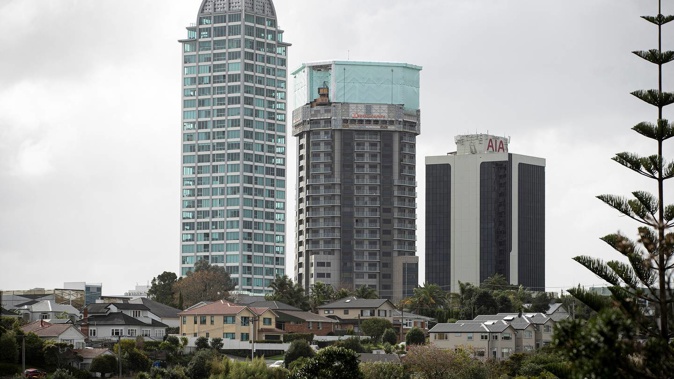
Developers will be able to demolish homes and build apartment blocks of at least six storeys deep inside many of Auckland's traditional suburbs under a new Labour Government law aimed at addressing runaway house prices.
Auckland Council has today released a proposed approach for implementing the changes requiring more intensification across the city.
In the biggest change to planning rules since the Unitary Plan, developers will be able to build tall apartment buildings within a 15 minute walk of the central city and 10-minute walk of metropolitan areas like Takapuna, Newmarket, Henderson and Albany.
The biggest impact will be on suburbs close to the metropolitan areas, which are largely zoned for single houses, such as Remuera, Mt Albert, Sandringham and Milford.
Auckland Council strategy chief Megan Tyler said it "will mean changes to the way we work and live and how our city works".
The changes have been prompted by the Government's National Policy Statement (NPS) on Urban Development aimed at high growth cities like Auckland, Tauranga, Wellington and Christchurch.
By law, Tyler said, the council must implement the NPS which has strong and prescriptive requirements for the council to enable greater building height and density across the city.
Council officers and councillors at Thursday's planning committee will begin working through what the changes mean for the council and seek to protect things dear to Aucklanders' hearts, like the wooden villas and bungalows in early suburbs and volcanic viewshafts.
The first cut includes changes to the central city and 10 metropolitan centres, covering about 10 per cent of the Super City. A second paper next month will look at the rest of the city.
Tyler said the council's approach is the start of a long and detailed policy and public consultation process in August next year before changes are made to the Unitary Plan, which came into effect in 2016.
As directed by the Government - unless a "qualifying matter" applies, the council must allow for unlimited development in the central city, at least six storeys within metropolitan centres and at least six storeys within walkable catchments around the central city, metropolitan centres and existing and planned rapid transit stops.
Tyler said "qualifying matters" included things of national significance in the Resource Management Act, such as listed historic buildings and homes.
About 30,000 homes that come under the "special character areas" in the Unitary Plan are not listed in the act and proposed to be an additional qualifying matter. These homes are in suburbs like Ponsonby, Herne Bay, St Marys Bay, Grey Lynn, Parnell, Birkenhead and Devonport.
Street-based surveys of special character properties have started to assess whether each property has high, medium or low qualities. Tyler and plans and place general manager John Duguid could not say how many of the 30,000 properties will qualify.
A council documents says the NPS does not allow blanket provisions, which could lead to multi-storey apartment towers being built in one- and two-storey character neighbourhoods.
Auckland's volcanic viewshafts, which have significant spiritual and cultural significance to mana whenua and other Aucklanders, are also proposed to be a qualifying matter for Auckland.
Tyler said Auckland already achieves many of the objectives of the NPS in the Unitary Plan. For example, the city centre allows for significant high-rise development and most metropolitan areas enable buildings greater than six storeys.
Under the NPS, the council must also remove rules for minimum off-street parking for new developments and be more responsive to private plan changes that add significant numbers of new homes and businesses near transport corridors.
Take your Radio, Podcasts and Music with you









